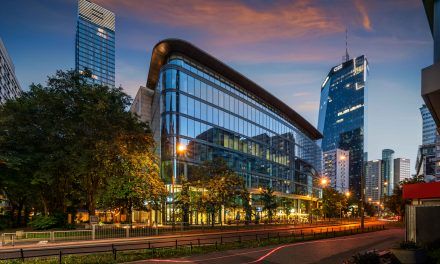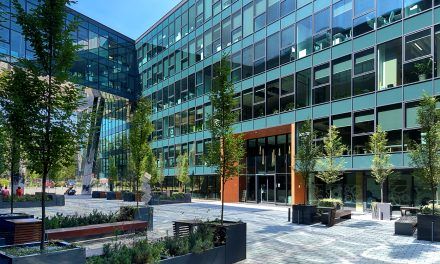As part of its 2022 Savills Impacts research programme, the global logistics sector has the wind behind it for the foreseeable future, with the main drivers being ecommerce, and the race for additional warehouse space to secure international company supply chains.

According to Savills, 2021 saw £237 billion invested into the logistics sector globally (an £81 billion increase yoy) plus record take-up for logistics assets both in Europe (being 28% above the long term average) and the US. Savills expects European online sales will be 25% of total spend in 2025, compared to 15% in 2020.
Marcus de Minckwitz, Head of EMEA Industrial & Logistics, Savills, says: “Ecommerce in the UK was about five years behind the US, and continental Europe is about five years behind the UK, so we have very strong growth ahead. Amazon is only recently established in Poland and Spain for example.”
In the last two years, the upheaval due to Covid and the current geopolitical crisis in the Ukraine has meant that companies all over the world have undoubtably encountered issues with their supply chain.
Kevin Mofid, Director, Head of EMEA Industrial and Logistics Research, comments, “Securing these supply chains requires companies shifting from a ‘just in time’ philosophy, to a ‘just in case’ strategy, and this means not only increasing their inventories, but also the nearshoring of their manufacturing.”
A McKinsey survey in 2021 found that 61 per cent of companies had increased inventory of critical products. This has naturally been a significant driver of warehouse take up all over the world in the past two years and set to continue. Vacancy rates are however at record low levels and Savills Logistics and Industrial Real Estate census 2021 found that lack of supply and zoning for new supply were the key challenges for market participants.
“The need for additional space is so great that we are even seeing some Class A office space being torn down and converted into industrial sites in the US, says Gregg Healy, Head of Savills Industrial Services, North America. “This is now considered the best use of the space.”
With a lagging development pipeline, most markets globally look to remain undersupplied for the foreseeable future, which supports continued rental growth.
“With such a gap between supply and demand, strong rental growth can be expected across the world and occupiers are likely to tolerate this,” says de Minckwitz, “Rising rents are a concern for warehousing occupiers, however they only form a small part of their overall costs, at an average of 5% of their overheads- transport and labour are far more significant.”
Savills advises that the pressure on supply will force the industry to innovate and we will see more multi-storey warehousing in Europe, especially in the best sites near to major cities. The integration of a higher level of technology in the industry will also be essential in order to prevent future supply chain challenges.
And there will undoubtedly be more challenges on the horizon this year, with rising inflation, the escalating conflict in Ukraine and China’s zero tolerance approach to stopping the spread of Covid all likely to cause further chaos on supply chains.
For the global logistics sector there is however little sign of the perfect storm clearing, explains Mofid. “Even in the long term these headwinds could be outweighed by a reorganisation of global supply chains. A move to nearshoring production would benefit industrial markets in developed nations, while continued GDP growth and ecommerce penetration in developing nations means demand for warehousing will increase even if manufacturing declines.”
 John Palmer, Head of Industrial Investments at Savills in Poland comments: The current geo political situation will act as a further catalyst in establishing Poland as a leading destination for Foreign Direct Investment. With excellent road, rail and port infrastructure, experienced developers and an efficient planning system we predict Poland increasing in popularity for manufacturers and large regional central distribution centres. In the short to medium term this may contribute to even higher tenant demand in the industrial sector and a further reduction in availability of space which is already at a record low at 3.2% as of Q1’2022. The current market environment is certainly conducive to the dynamic rental growth in Poland.
John Palmer, Head of Industrial Investments at Savills in Poland comments: The current geo political situation will act as a further catalyst in establishing Poland as a leading destination for Foreign Direct Investment. With excellent road, rail and port infrastructure, experienced developers and an efficient planning system we predict Poland increasing in popularity for manufacturers and large regional central distribution centres. In the short to medium term this may contribute to even higher tenant demand in the industrial sector and a further reduction in availability of space which is already at a record low at 3.2% as of Q1’2022. The current market environment is certainly conducive to the dynamic rental growth in Poland.



























